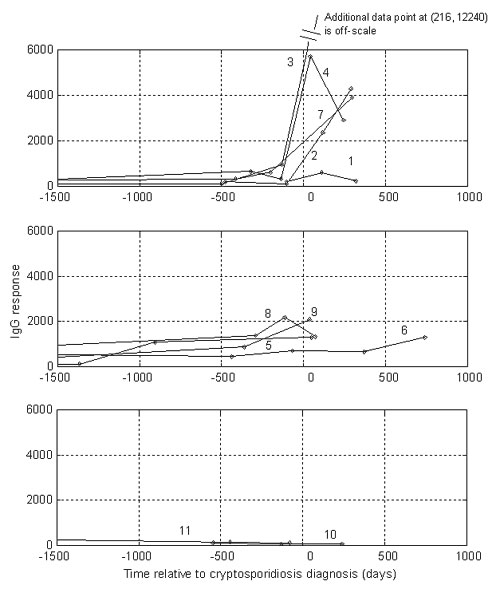Volume 7, Number 6—December 2001
Research
The Serologic Response to Cryptosporidium in HIV-Infected Persons: Implications for Epidemiologic Research
Figure 2

Figure 2. Temporal immunoglobulin G (IgG) response of the 11 cases, grouped by high IgG responders (Cases 1,2,3,4,7), medium responders (Cases 5,6,8,9), and low responders (Cases 10,11). Time zero for each plot is the time of clinical diagnosis.
Page created: December 09, 2010
Page updated: December 09, 2010
Page reviewed: December 09, 2010
The conclusions, findings, and opinions expressed by authors contributing to this journal do not necessarily reflect the official position of the U.S. Department of Health and Human Services, the Public Health Service, the Centers for Disease Control and Prevention, or the authors' affiliated institutions. Use of trade names is for identification only and does not imply endorsement by any of the groups named above.